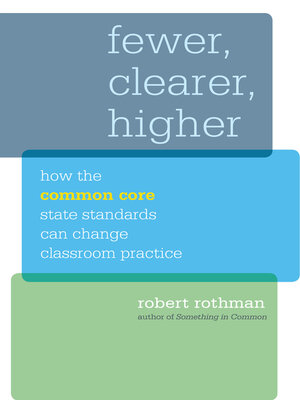Fewer, Clearer, Higher
ebook ∣ How the Common Core State Standards Can Change Classroom Practice · HEL Impact Series
By Robert Rothman

Sign up to save your library
With an OverDrive account, you can save your favorite libraries for at-a-glance information about availability. Find out more about OverDrive accounts.
Find this title in Libby, the library reading app by OverDrive.



Search for a digital library with this title
Title found at these libraries:
| Library Name | Distance |
|---|---|
| Loading... |
In clear and concise language, veteran education writer Robert Rothman identifies nine instructional "shifts" encouraged by the new Common Core State Standards and provides examples of how teachers and school districts are overcoming challenges in implementation.
He presents the research and rationale behind each change and provides examples of teachers making the shifts as well as sample test questions that could be used to gauge student progress in the future. Rothman also addresses major challenges that are emerging as districts and schools move to implement the standards and highlights the ways leading school districts are working to overcome them.
Fewer, Clearer, Higher—the mantra adopted by the writers of the Common Core to emphasize the difference between existing state standards and the new ones needed to truly prepare all students for college or careers—is an indispensable guide for educators and anyone else seeking a better understanding of this major new development in education policy.
He presents the research and rationale behind each change and provides examples of teachers making the shifts as well as sample test questions that could be used to gauge student progress in the future. Rothman also addresses major challenges that are emerging as districts and schools move to implement the standards and highlights the ways leading school districts are working to overcome them.
Fewer, Clearer, Higher—the mantra adopted by the writers of the Common Core to emphasize the difference between existing state standards and the new ones needed to truly prepare all students for college or careers—is an indispensable guide for educators and anyone else seeking a better understanding of this major new development in education policy.







